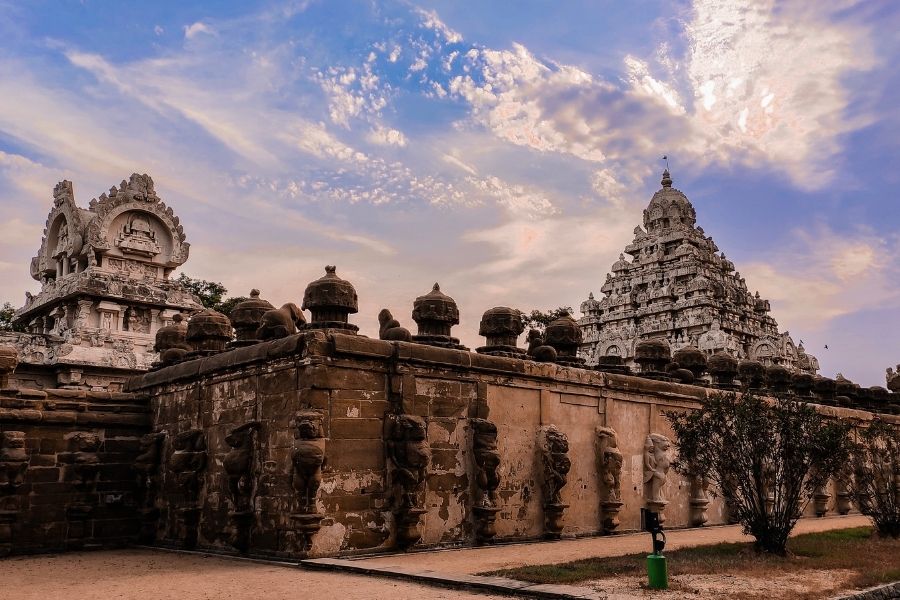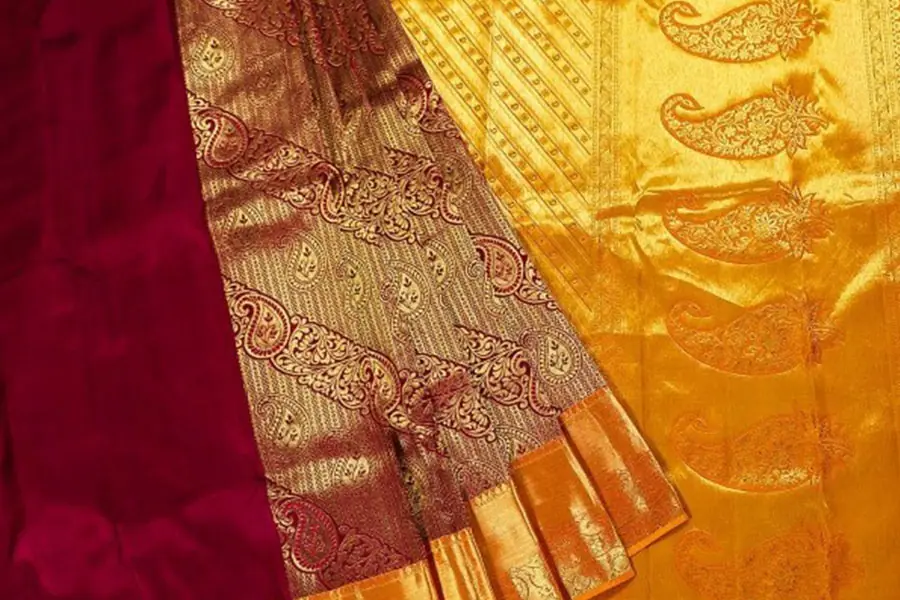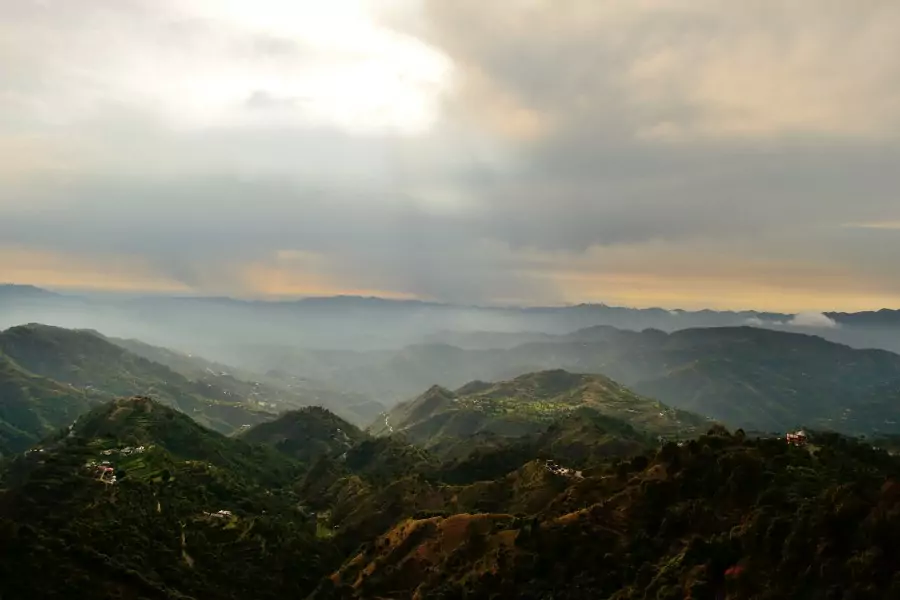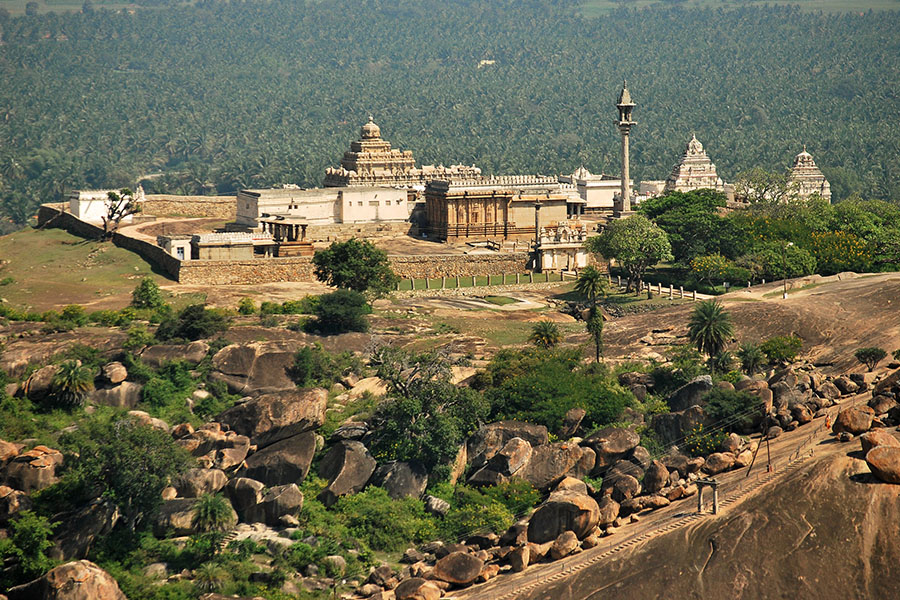Kanchipuram Temple – Famous Temples, Festivals, How to Reach

Kanchipuram, known as the City of a Thousand Temples, is one of India’s most sacred cities. Located in Tamil Nadu, it draws countless pilgrims and travelers. The city’s rich history, spirituality, and ancient architecture make it a must-visit destination for those seeking a deep cultural experience.
In this article, let’s dive into the history, spiritual significance, and must-visit temples of Kanchipuram.
1. History of Kanchipuram: A Spiritual Legacy

Kanchipuram’s history spans over 1,500 years. It once served as the capital of the Pallava dynasty, which laid the foundation for the many temples built here. Over the centuries, the Cholas, Vijayanagar Empire, and other South Indian dynasties contributed to the city’s spiritual and architectural development.
This sacred city is a significant pilgrimage destination for Shaivites (followers of Lord Shiva) and Vaishnavites (followers of Lord Vishnu), making it a unique place in India’s religious landscape.
2. Famous Temples in Kanchipuram
Kanchipuram houses some of the grandest and oldest temples in India. Each temple reflects a blend of devotion, art, and history.
a. Kamakshi Amman Temple

The Kamakshi Amman Temple is dedicated to Goddess Kamakshi, a form of Goddess Parvati. This temple stands as a symbol of the city’s strong spiritual foundation. Legend says that Goddess Kamakshi performed penance under a mango tree here to win Lord Shiva’s heart.
- Highlights: The central deity, intricate sculptures, and the annual temple festival (February-March).
- Architecture: The temple showcases the classic Dravidian architectural style, with high towers and intricately carved pillars.
b. Ekambareswarar Temple

Dedicated to Lord Shiva, the Ekambareswarar Temple is one of the largest and most significant Shiva temples in South India. The temple represents the Prithvi Lingam, or the element of earth, one of the Panch Bhoota Sthalams (representing the five elements).
- Highlights: The sacred mango tree, believed to be over 3,500 years old, and the majestic 1000-pillared hall.
- Architecture: The temple’s 59-meter tall gopuram (tower) is one of South India’s tallest.
c. Varadaraja Perumal Temple

This majestic temple, dedicated to Lord Vishnu, is a vital pilgrimage spot for Vaishnavites. The Varadaraja Perumal Temple holds a significant place among the 108 Divya Desams (Vishnu temples mentioned in the Alvar saints’ writings).
- Highlights: The 100-pillar hall, the grand Brahmotsavam festival, and the huge idol of Lord Varadaraja.
- Architecture: The temple complex boasts intricate carvings, beautiful courtyards, and large temple tanks.
3. The Spiritual Vibe of Kanchipuram
Kanchipuram is often called a Moksha Sthala, which means devotees believe they can attain salvation by visiting its temples. These spiritual spaces are not just places of worship; they offer tranquility and help devotees cleanse their souls.
Many visitors report feeling a deep sense of peace after visiting the city’s temples. It’s a place where time seems to stand still, allowing pilgrims to reconnect with their inner selves.
4. Architectural Wonders of Kanchipuram
The temples in Kanchipuram are not only places of spiritual significance but also marvels of Dravidian architecture. The towering gopurams (gateway towers), massive courtyards, and intricately carved pillars stand as a testament to the artistic achievements of the ancient dynasties.
Temples like Ekambareswarar and Kamakshi Amman showcase gopurams that dominate the skyline, inviting devotees from miles away. Each stone carving tells a story, depicting scenes from Hindu mythology and the history of South India.
5. Festivals in Kanchipuram: A Cultural Celebration
The city’s temples come alive during grand festivals. These celebrations attract thousands of devotees and tourists. Some major festivals include:
- Panguni Uthiram: Celebrated in March-April, it marks the divine marriage of Lord Shiva and Goddess Parvati.
- Brahmotsavam: Held at Varadaraja Perumal Temple, this 10-day festival features a grand procession of Lord Vishnu.
- Kamakshi Amman Festival: Held in February-March, this festival celebrates the goddess’s penance.
6. Kanchipuram Silk Sarees: A Timeless Tradition

Apart from its temples, Kanchipuram is famous for its silk sarees. The Kanchipuram silk sarees are known for their vibrant colors, intricate zari work, and luxurious texture. No visit to the city is complete without witnessing the traditional art of silk weaving.
Visitors often explore local silk shops or visit the weaving villages to buy authentic Kanchipuram sarees, which are highly sought after for weddings and special occasions.
7. How to Reach Kanchipuram
Kanchipuram is easily accessible via air, rail, and road.
- By Air: The nearest airport is Chennai International Airport, located 72 kilometers away.
- By Train: Kanchipuram has its own railway station, with regular trains connecting it to cities like Chennai, Bangalore, and Tirupati.
- By Road: Frequent buses and taxis are available from Chennai, Vellore, and other nearby cities.
8. Best Time to Visit Kanchipuram
The ideal time to visit Kanchipuram is between October and March. The weather during these months is pleasant, allowing visitors to explore the temples comfortably. Summers can be very hot, while monsoons may disrupt travel plans, making winter and early spring the best seasons for a visit.
Conclusion
Kanchipuram is more than just a temple town. It’s a spiritual, cultural, and architectural treasure trove. The city’s ancient temples are testaments to centuries of devotion, architectural genius, and artistic mastery. Whether you’re a pilgrim seeking blessings, a history enthusiast, or an admirer of stunning architecture, Kanchipuram offers an unforgettable experience.
FAQs
Q1: What makes Kanchipuram special?
A: Kanchipuram is renowned for its sacred temples, rich history, and exquisite silk sarees.
Q2: Which temple should I visit first in Kanchipuram?
A: The Kamakshi Amman Temple is a must-visit due to its spiritual significance and grand architecture.
Q3: Are Kanchipuram silk sarees expensive?
A: Authentic Kanchipuram silk sarees are highly valued for their craftsmanship and can be expensive, especially those with intricate zari work.
Q4: What is the best time for visiting Kanchipuram?
A: The best time to visit is from October to March, when the weather is cooler and suitable for temple visits.
Q5: Can I see traditional silk weaving in Kanchipuram?
A: Yes, several local shops and villages allow visitors to see the silk weaving process and buy sarees directly from the weavers.


